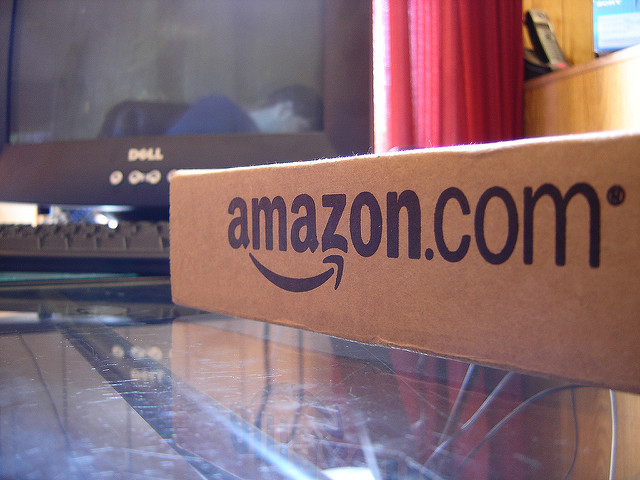Subscription services such as Amazon’s Subscribe and Save ensure that consumers never have to be without their most important, most used supplies. While consumers love the convenience, both retailers and manufacturers love the predictable sales stream that automatic replenishment provides.
Though some subscription services have been around for a long time (fruit of the month club, anyone?) most recently they have been associated with digital media products like Netflix or Spotify.
Different Models for Product Subscriptions
Birchbox broke the mold in 2010 as one of the first product subscription services to become broadly popular. Other services like Barkbox and StitchFix soon followed. But the intent of these services is to facilitate product discovery and activate new shoppers. It wasn’t until Amazon introduced Subscribe and Save did the concept of automatic replenishment as a method of locking in customer loyalty really take off.

In Amazon’s hands, product subscriptions or auto-replenishment serves the opposite purpose of the Birchbox model: it’s meant to lock consumers into brand, product, and regular sales schedule in exchange for extreme convenience. It’s the “set it and forget it” for all kinds of common household goods. Similar to Amazon Dash and other types of screenless ecommerce, auto-replenishment requires no action by the shopper (after set up) to complete a sale.It’s the best of both worlds for consumers: never run out and never have to remember to buy more. Additionally, Subscribe & Save products are usually discounted—rewarding shopper loyalty with savings.
Auto-Replenishment Provides Predictable Sales
For brands, the subscription model provides predictability and enables brands to better keep track of both demand and inventory. Automated reordering removes many barriers to conversion, but perhaps most importantly, it removes opportunities for competitors to displace your brand. Household supplies like batteries, toilet paper, and laundry detergent as well as personal care products like lotion, toothpaste, and shampoo are some of the most common products that drive subscriptions. In addition, the baby category is popular for new parents who need a steady supply of diapers without a lot of hassle.
Auto-Replenishment for Your Products: Packaging and Supply Chain
If you’ve been thinking of adding Subscribe and Save to your promotional lineup, you may want to get going. Amazon opened up Subscribe & Save to FBA sellers (in good standing) in 2016. You don’t want to be beat to the punch by enterprising third party sellers or your competitors.
Job 1 is getting on the list. If you’re a leader in your category, then it's a much easier conversation than if you’re not. But being flexible and innovative in your thinking can get you there. Figure out what’s the right pack size and pricing that will work for Subscribe & Save. What savings do you need to pass on to get your consumers to stock up on your package? Learnings from club store packs will come in handy.
But it’s not quite so simple. If your pack size and pricing passes muster with consumers, your packaging will need to survive the hurdles of the supply chain. Unbreakable paper goods like diapers are a lot easier than pasta sauce in glass jars. Getting it right requires attention and commitment from your supply chain partners. Make sure you have senior management backing you in your efforts. Often category leaders find themselves beaten to the punch by newer emerging brands because big companies have much more process and cross-functional hand-offs to “making things happen” while smaller brands will experiment and win.
Auto-Replenishment Puts Pressure on Product Availability
But before you get started, make sure you have a deep understanding of your current ecommerce performance. If you don’t have the basics right, a subscription model might highlight weaknesses. For example, if your product availability is spotty or if your ratings and reviews are lackluster. If a consumer subscribes to your product, the expectation for regular purchase and delivery is set; shoppers will depend on your items to be in-stock. A set back in fulfillment, for example, a canceled or delayed order might damage your brand loyalty status. Working as a team with your buyer, account manager, and supply chain partner is critical to ensure you’re getting it right with availability on that digital shelf.
In this age of endorsements, a lack of ratings and reviews can prevent subscriptions to your products in the first place. You need to be sure you have robust review levels and ratings, and some good stories in your reviews. Even if you’ve established loyalty, a shopper might think twice before making the commitment to subscribe if they feel uncertain about how great your product is. Engaging the shopper with a deeper sense of value from your product will also help you break through the clutter of the digital shelf. Invest in great product content; use stories and videos that bring to life your product benefits. If anyone is in the market to buy a multi-pack of intense moisturizing shampoo and conditioner on Subscribe & Save, how can you, as a manufacturer, bring confidence to their brand choice?
It goes without saying that when your product is in the hands of the consumer, whether through Subscribe & Save or purchased in a physical store it needs to meet (and exceed) expectations!




